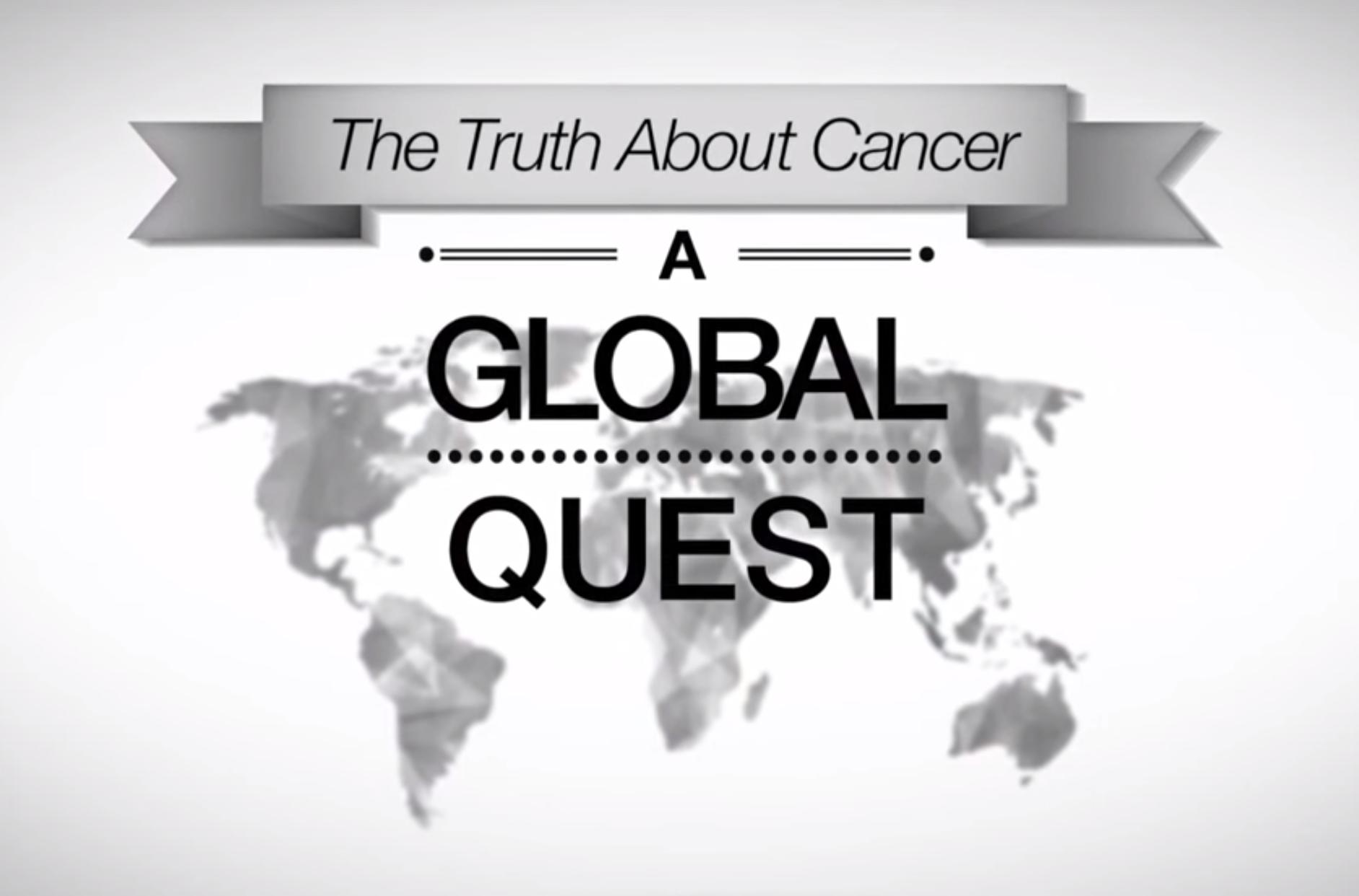The NASTY TRUTH about Cancer – Cancer is an all-encompassing phrase that refers to the disease that develops as a consequence of biological alterations that lead to the unchecked proliferation and division of cells.
A cell will be given the command to die so that it may be replaced with a newer cell in the body that will perform its duties more effectively. Cancerous cells are missing the components that tell them to cease dividing and to die when they reach a certain age. As a consequence of this, they accumulate throughout the body, consuming the oxygen and nutrients that would normally be used by the body to sustain other cells.
Cancerous cells have the potential to create tumors, weaken the immune system, and produce other alterations that interfere with the body’s ability to perform its normal functions.
It is possible for cancerous cells to begin in one location, then spread to other areas via the lymph nodes. These are groups of immune cells that may be found in many parts of the body.
The World Health Organization (WHO) estimates that there were 18.1 million new instances of cancer worldwide in 2018, as well as 9.6 million cancer-related deaths. Cancer claims the lives of one out of every eight men and one out of every 11 women throughout the world during their lifetimes. One in five men and one in six women acquire the illness.
There are a great number of variables that might put a person at risk for developing cancer. In addition to elements that are biological, environmental, and occupational in nature, factors that are connected to one’s way of life also play a crucial part in the development of many forms of cancer.
Aspects of one’s way of life –
The way we live our lives and the decisions we make on a day-to-day basis are directly responsible for many of the risk factors that may increase or decrease our likelihood of acquiring cancer. This indicates that we do have some influence over the degree to which we are exposed to these stimuli. The following is a list of modifiable lifestyle variables that have been linked to an increased risk of cancer:
Excessive body fat and obesity –
It is believed that 3.6% of all newly diagnosed malignancies in adults are linked to excess obesity anywhere in the world. A higher percentage of body fat has been found as a potential contributor to the development of ovarian, gallbladder, and advanced prostate cancers. Obesity in the abdominal region is associated with an increased risk of colorectal cancer as well as endometrial cancer, and it is thought to be a contributing factor in the development of pancreatic cancer as well. Gaining weight after menopause is another factor that has been linked to an increased risk of developing postmenopausal breast cancer. Therefore, keeping a healthy weight throughout one’s life has obvious positive effects on one’s health and may provide a significant degree of protection against cancer.
Inactivity in terms of the body –
It is estimated that a worldwide lack of physical exercise contributes to the cause of death of 135,000 people each year due to cancer. In addition to lowering the risk of developing some cancers, regular exercise helps prevent weight gain, which is itself associated with an increased risk of developing certain cancers.
Adults should collect up to 300 minutes of moderate physical activity or 75 to 75 minutes of vigorous or moderate-intensity activity per week, or a combination of both moderate and vigorous exercises, in order to minimize their risk of developing cancer. For the prevention of unhealthy weight gain and some malignancies, activity at the higher end of the scale, namely 300 minutes of moderate and 150 minutes of vigorous, is essential. It is also recommended to limit the amount of time spent in extended sitting and to break up long periods of sitting as frequently as is feasible. Both of these recommendations can help improve health.
If you can, PLEASE donate so that we can keep sharing important news with you… You can support our efforts by buying us a coffee (or tea) by donating a few dollars. https://gogetfunding.com/realnewscast/
Diet –
It has been estimated that a lack of fruit and vegetable consumption causes 374,000 deaths from cancer each year throughout the world.
It is encouraged to have a diversified diet of healthy foods, such as vegetables, fruits, grains, dairy products, lean meat, fish, and water, and to minimize the number of foods that include saturated fat, added salt, and added sugars in one’s diet. The standard nutritional recommendations recommend consuming five portions of vegetables and two serving sizes of fruit each day and limiting meat intake to 455 g of lean meat per week, which is equivalent to up to 65 g per day. In addition, the guidelines recommend consuming whole grains at least three times per week.
Tobacco –
The World Health Organization (WHO) considers the use of tobacco as the single most important preventable risk factor for cancer mortality globally, and the WHO estimates that the use of tobacco results in up to 1.5 million deaths from cancer each year.
The exposure of a larger community to tobacco smoke, often known as second-hand smoke, has an impact on the health of that group. A further risk is posed by exposure to smoke from third-hand sources. Long after a person has stopped smoking, the nicotine and other compounds in the tobacco can still be found clinging to their clothing, furniture, draperies, walls, beds, carpets, dust, automobiles, and other surfaces. This is known as nicotine residue. Touching contaminated surfaces or inhaling the off-gassing that emanates from those surfaces both put people at risk of being exposed to the chemicals in question.
Quitting smoking lowers a person’s chance of developing lung cancer as well as other major cancers. When a person stops smoking, their chance of developing cancer in their mouth, throat, esophagus, and bladder are cut in half after five years. After ten years, their risk of dying from lung cancer is also cut in half.
Giving up smoking can indeed contribute to both short-term and long-term improvements in health, such as a drop in blood pressure and heart rate, managed improved circulation and lung function, and a reduced risk of heart attack and stroke. Quitting smoking can also help reduce the risk of lung cancer. According to the World Health Organization (WHO), persons of all ages who have already established health problems connected to smoking might also benefit from stopping smoking.
Alcohol –
According to estimates provided by the WHO, excessive alcohol use is to blame for 351,000 cases of cancer diagnosed each year around the globe. The elevated risk of cancer is present even at modest levels of alcohol intake, and it rises with increasing amounts of alcohol consumed. When combined, the harmful effects of smoking tobacco and drinking alcohol have a synergistic effect that raises the risk of developing malignancies of the upper gastrointestinal tract. It is recommended that males restrict their consumption to no more than two drinks per day, while women should limit themselves to no more than one drink per day.
ultraviolet (UV) rays –
According to the World Health Organization (WHO), there were 65,000 fatalities attributable to melanoma worldwide in the year 2000. There is a positive association between UV-emitting tanning equipment (solaria) and squamous cell skin cancer, as well as substantial evidence that UV-emitting tanning devices (solaria) induce melanoma of the skin and eye. When solaria are used before the age of 30, the chance of developing melanoma is significantly enhanced. A shift in our mentality is necessary in order to meet the goals of lowering UV exposure and increasing the number of people who use sunscreen and wear protective clothing.
Infectious diseases –
It is estimated that infections are the cause of 16.1% of all newly diagnosed cases of cancer worldwide. Nevertheless, estimations diverge widely depending on location. According to the World Cancer Report 2008, the human papillomavirus, helicobacter pylori, and the hepatitis B and C viruses have been identified as the primary infectious agents. These four pathogens are responsible for an international proportion of 6.1%, 5.4%, and 4.3% of all cancer cases, respectively. They are responsible for 1.9 million incidences of cancer all over the world.
Therefore, adopting the appropriate preventative steps will go a long way toward preventing the development of many different types of cancer.
The clincher is that –
It has been noted that the rates of all forms of cancer have been continuously growing around the globe, and a significant variety of risk factors may be attributed to this trend. The development of many different forms of cancer is directly attributable to our way of life, independent of any and all other potential risk factors. It is important to be aware that the majority of the aspects of our lifestyle may be altered. We are able to prevent the development of many malignancies by making the necessary adjustments to them.
Free Speech and Alternative Media are under attack by the Deep State. Real News Cast needs reader support to survive. Please Contribute via GoGetFunding



